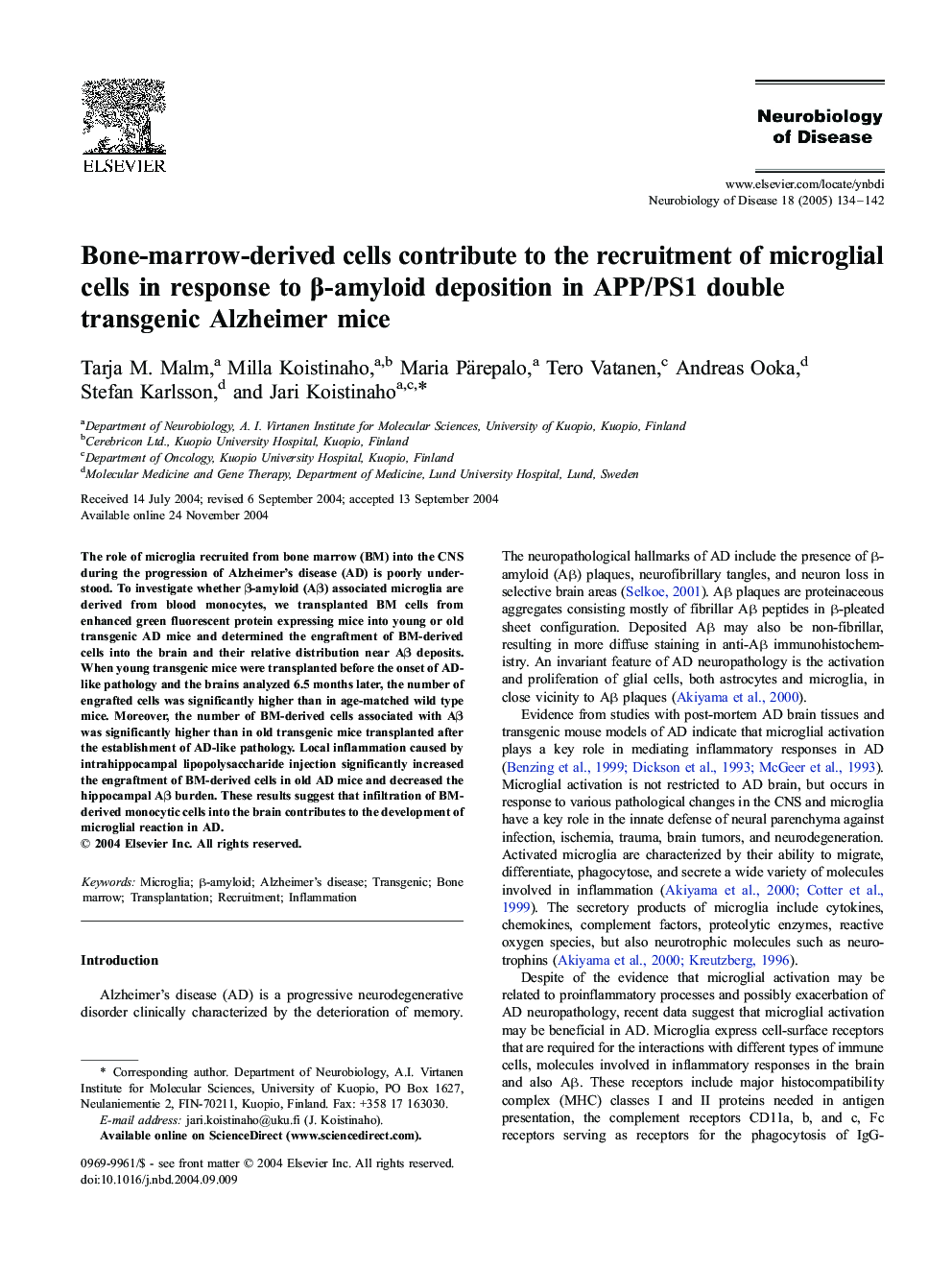| Article ID | Journal | Published Year | Pages | File Type |
|---|---|---|---|---|
| 9989845 | Neurobiology of Disease | 2005 | 9 Pages |
Abstract
The role of microglia recruited from bone marrow (BM) into the CNS during the progression of Alzheimer's disease (AD) is poorly understood. To investigate whether β-amyloid (Aβ) associated microglia are derived from blood monocytes, we transplanted BM cells from enhanced green fluorescent protein expressing mice into young or old transgenic AD mice and determined the engraftment of BM-derived cells into the brain and their relative distribution near Aβ deposits. When young transgenic mice were transplanted before the onset of AD-like pathology and the brains analyzed 6.5 months later, the number of engrafted cells was significantly higher than in age-matched wild type mice. Moreover, the number of BM-derived cells associated with Aβ was significantly higher than in old transgenic mice transplanted after the establishment of AD-like pathology. Local inflammation caused by intrahippocampal lipopolysaccharide injection significantly increased the engraftment of BM-derived cells in old AD mice and decreased the hippocampal Aβ burden. These results suggest that infiltration of BM-derived monocytic cells into the brain contributes to the development of microglial reaction in AD.
Keywords
Related Topics
Life Sciences
Neuroscience
Neurology
Authors
Tarja M. Malm, Milla Koistinaho, Maria Pärepalo, Tero Vatanen, Andreas Ooka, Stefan Karlsson, Jari Koistinaho,
